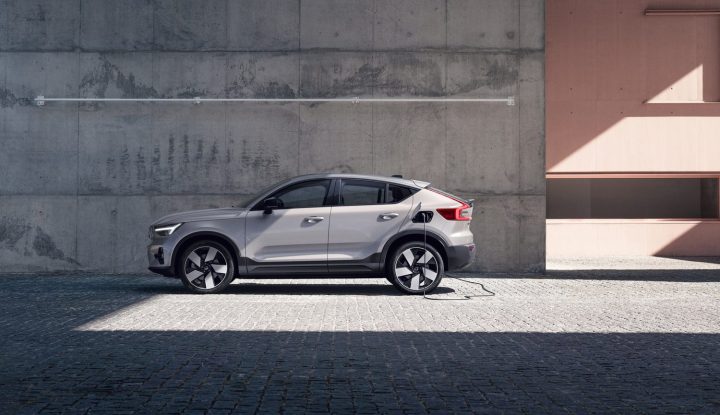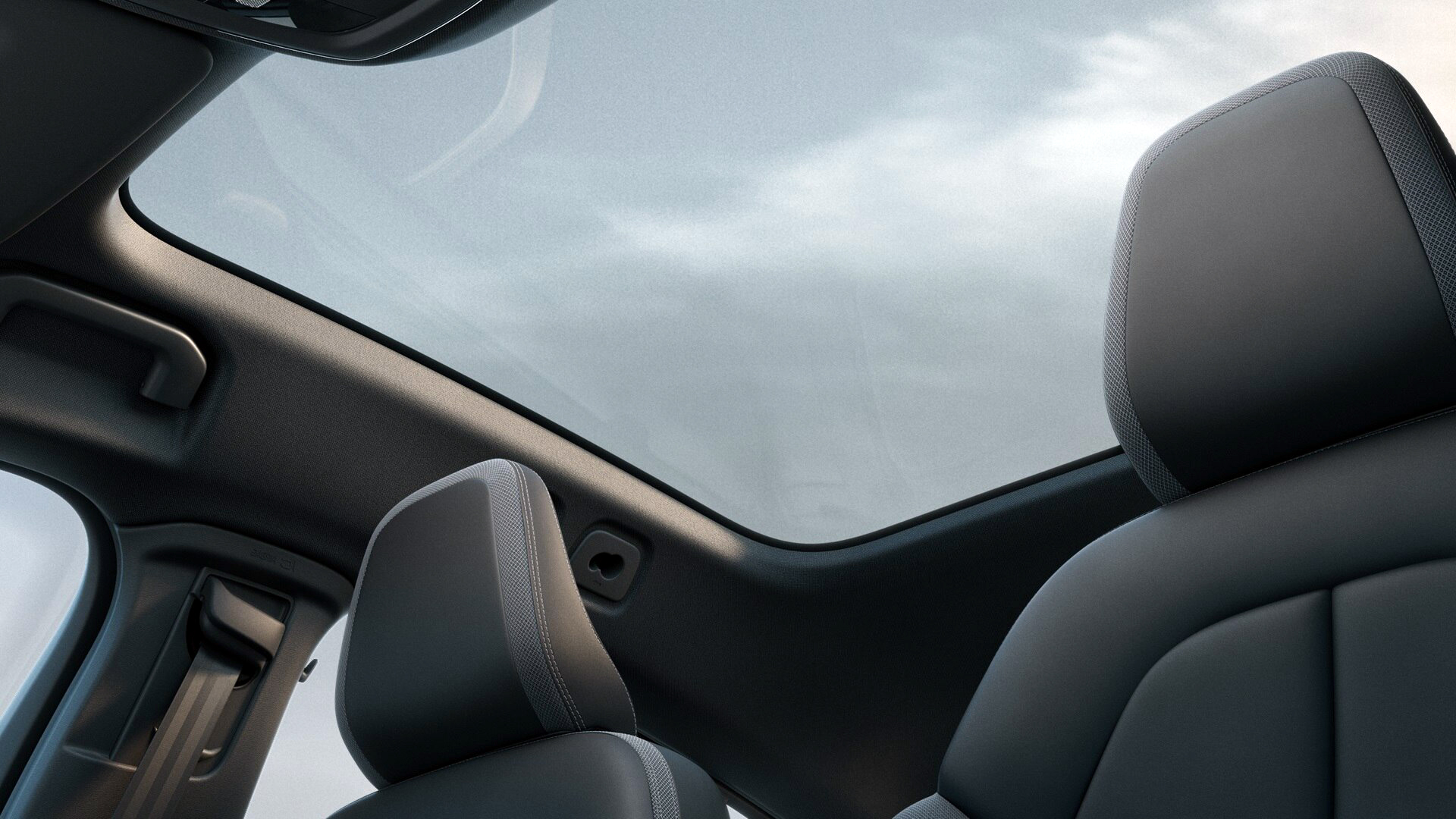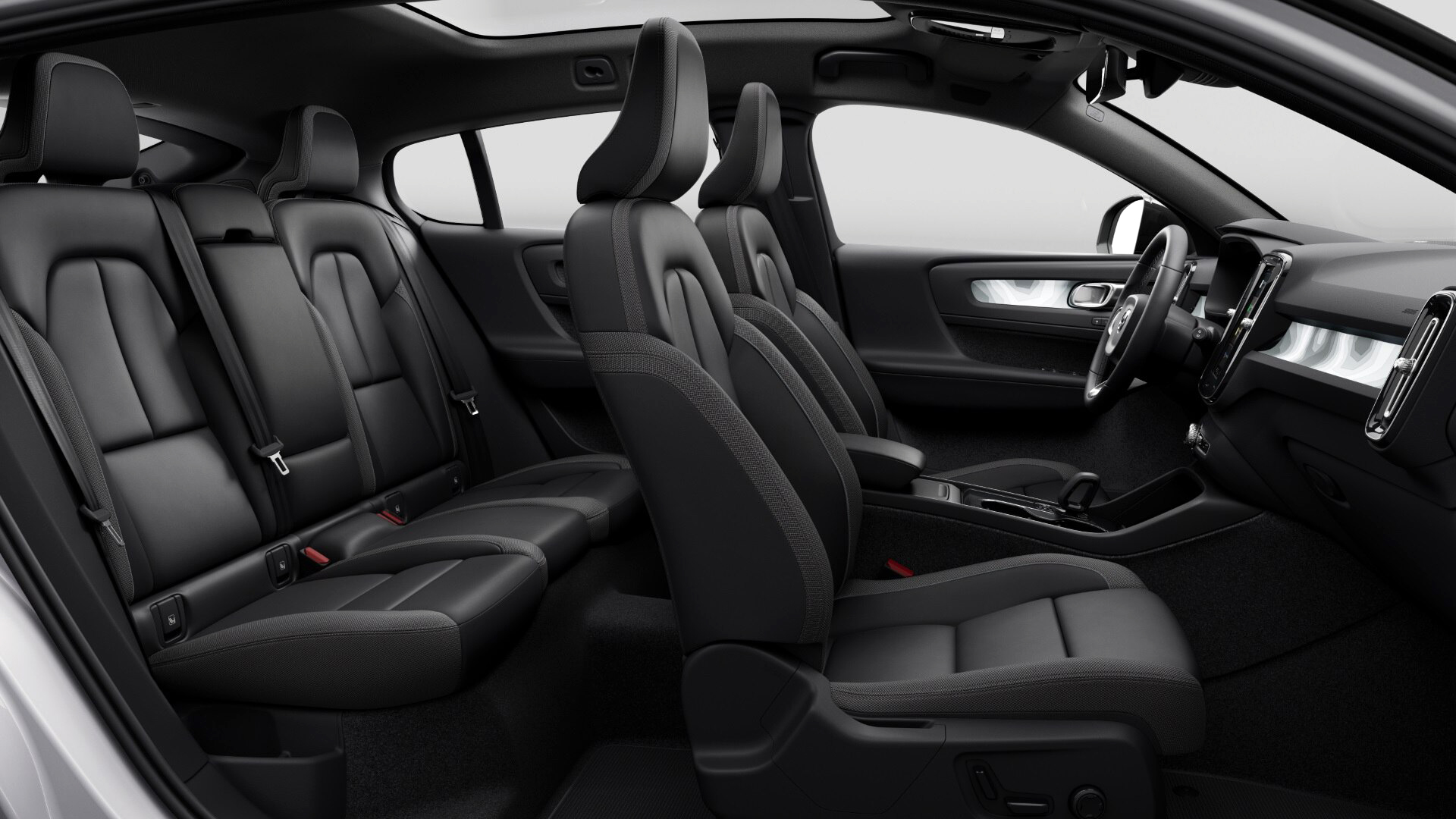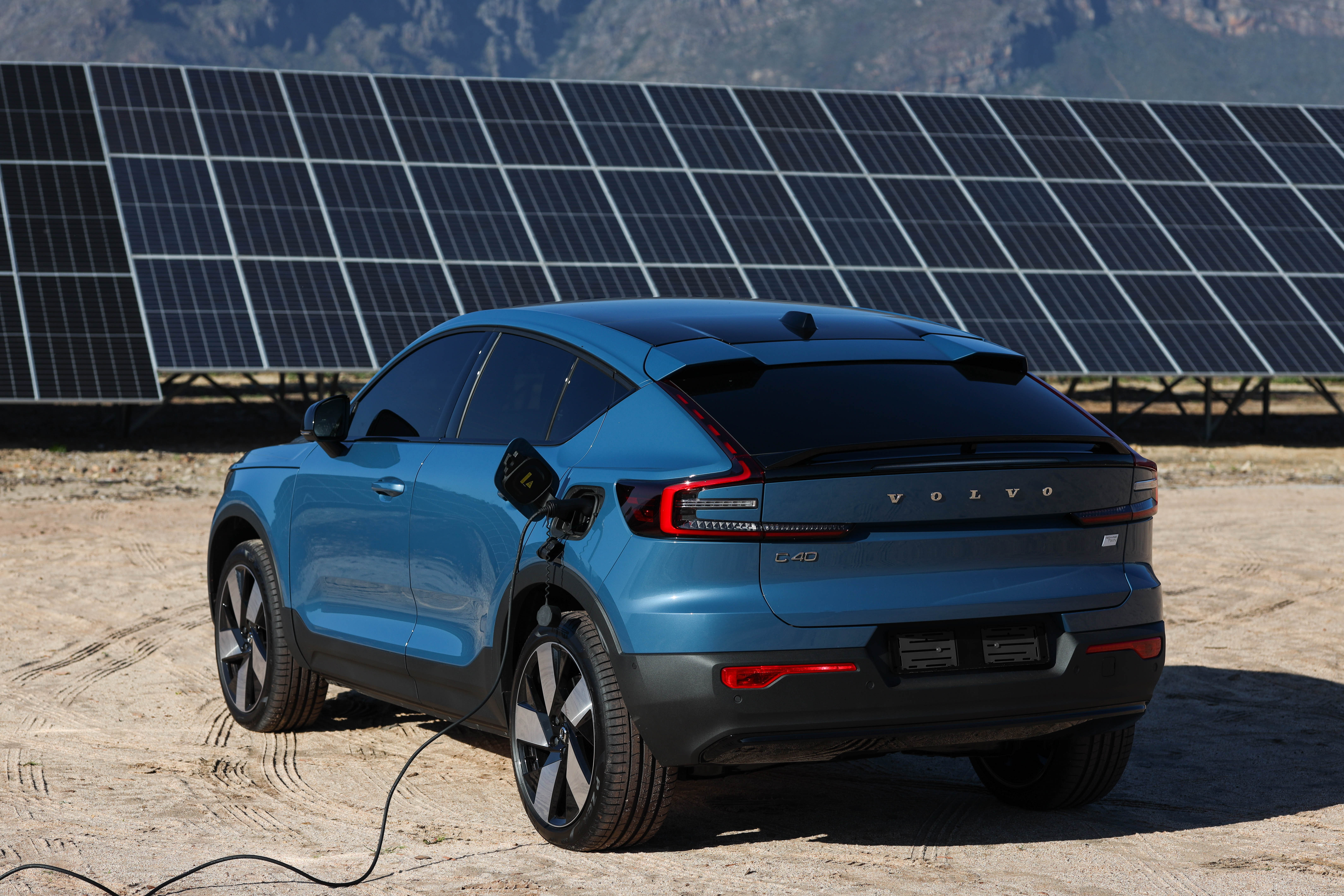MOTORING
Volvo C40: An eco-friendly urban EV masterpiece – but beware of range anxiety

Eight days spent in the all-electric Volvo C40 had me marvelling at my super-quick Swedish ride while fighting the crippling fear that I’d run out of power.
Range anxiety is real. Up until the advent of mass-produced electric cars – with the Nissan Leaf making its debut in 2010 – no one had considered the term. These days, it’s even found its way into the Oxford English Dictionary, defined as: “Worry that an electric vehicle will not be capable of completing intended journeys (or of reaching a specific destination) before its battery loses power.”
Recently I got to experience the full extent of range anxiety in the Volvo C40.
Sure, I’ve driven a whole lot of EVs over the past few years, but I’ve never really lived with one – travelled range-challenging distances or fully experienced the everyday highs and lows of an all-electric vehicle.
While the C40 is a real looker, with its coupé-like stance, its futuristic front and environmentally considerate Swedish interior (no leather), its real-life range of about 330km is rather underwhelming. (And this is not a specific Volvo problem; many EVs are range-challenged, apart from, say, the likes of the Merc EQS and BMW i7.)

The C40 has a panoramic sunroof. (Photo: Volvo SA)
The Swedish manufacturer’s claim is 444km on the C4O, but that’s only doable when executing plenty of stop/start, battery replenishing, highly considered urban driving, and definitely without using the aircon or heated seats.
A couple of weeks ago, I decided to take my all-electric steed out of Cape Town on a road trip that entailed 150km one way. After doing a few errands, I had 230km of battery range on the dial. I decided not to fill up at the fast charger at Willowbridge before I left. Big mistake.
After having done hours of pre-trip prep work, I calculated that it would be better to fill her up along the way because then I would hopefully have enough power to get to the cabin and back on a single charge.
I spent hours trawling the GridCars website, checking where various power points were en route. Paarl came up with three. With my 230km range top of mind, since Paarl was just 50km away and kind of en route to my destination near Wolseley (which has no electric charge points), I planned to do a detour off the N1, fill up my C40 and then, with peace of mind, enjoy my much-needed break.
I even called a guy at the Joburg office of GridCars to double-check if the power points in Paarl were all working and which ones would be down if there was load shedding. He reassured me that two would always be working.
The Volvo C40 has an in-built Android Auto-based operating system, with apps and services like Google Maps, Google Assist and even YouTube displayed on the infotainment screen.
So once on the N1 north, I pressed the Google Assist mic.
“Take me to the nearest electric charging station.”
The friendly GA bot willingly obliged and the route to the closest charger in Paarl appeared on my screen. How cool was this! I duly took the Paarl off-ramp and off I went. By now my range was 160km.
Up until this point, I had not been driving carefully. I’d been driving freely, meaning speedily, testing the breathtaking speed of my Swede (which zips 0-100km in just 4.7 seconds) aided by its twin-motor setup that drives all four wheels and has 300 kW/660 Nm on tap.
No matter. I was certain I’d get fully charged within the hour.
I drove for 15km aided by my Google-assisted navigation, only to land up in the middle of… well, nowhere. I found myself outside the rusty gate of a rundown-looking farm. Could it be possible that this place had an EV charger? It seemed highly unlikely.

The environmentally conscious interior of the Volvo C40. (Photo: Volvo SA)
My doubts were confirmed when a man in a Hilux drove up.
“Um, do you have an EV charger?” I shouted.
“Wat is dit?”
“Battery charger, you know, for this electric car…”
He clearly had never heard of one. My range had now dipped to 140km.
Right, then. According to my research, there were at least two other chargers in Paarl. I barked new orders to Google Assist and a new map appeared on my screen.
Ten minutes later I pulled up at a gate in the middle of Paarl. Someone’s home. Everything looked locked up. There was a small possibility that Google had tracked a home charger but I wasn’t about to ring the door to find out whether the guy owned an iPace or an EQS.
By now desperation had begun to seep into my pores. My sweaty palms gripped the non-leather steering wheel.
The man from GridCars had reassured me that BMW in Paarl had a working charger. Fuck Google Assist. I decided to punch my own navigation into my phone. BMW was 10km away and by the time I pulled into the dealership, I had 120km range to spare.
I’ve never been as happy to see an inanimate object. From all my research, I’d been told that I would be able to charge the C40 pretty quickly on a fast charger. I planned to grab a cup of coffee and send some emails while my Volvo filled up.
Plugged in and good to go, I was speechless when the digital charging point informed me that the estimated time for the car to be fully charged would be 5pm. It had just gone 11am. Six hours to kill in Paarl. No! No! No!
“This is insane!” I shouted at the poor salesman from BMW. “Is there something wrong with this charger?”
“No, it’s a slow one.” Big bummer. I’d simply assumed a German company would have a fast, efficient charging station. Never assume.
“Are there any fast chargers in Paarl?” I was trying not to swear.
“Not that I know of,” he muttered. “The closest one is probably in Worcester.”
“Worcester?” I screeched. “I can’t go to f#$$ng Worcester! It’s 50km in the opposite direction. And then another 50km back. And what happens if that charger isn’t working? What happens if there’s load shedding?”
The BMW guy looked as hopeless as I was.
With my head now whirring like a cam belt and my heart beating like a spastic metronome, I needed to come up with a new plan. Range anxiety was real.
With just 100km range left and with my destination 90km away, I had no choice but to hedge my bets on regenerative driving. There was a set of home charging cables in the boot. If I could just make it to the cabin, I could do an overnight charge.
I now fully embraced one-pedal driving, where one only uses the acceleration pedal to control the car, because as soon as you release the pedal, it slows down, regenerating the battery and extending the range.
Alternatively, by exerting short bursts of acceleration and then releasing the pedal, one can increase one’s range and thus travel more efficiently.
There were times when I let the Volvo roll down declines, tapping off the acceleration and watching my range stay stable.
By the time I reached the cabin, I had 10km left. Phew. I felt like weeping. I plugged the C40 into a wall socket. It took over 10 hours to fully recharge, but much longer for me to rid myself of the fallout of range anxiety.

The Volvo C40, all charged up. (Photo: Volvo SA)
What I can say is that I learnt a lot: I got to grips with one-pedal driving, with understanding the joys of fast chargers and the frustrations of slow ones, but more than anything, I realised how, as a country, we are still pretty far away from being able to provide people with the confidence and peace of mind to do long trips in EVs.
While it’s possible with the correct planning to drive between Cape Town and Joburg by charging at places like Worcester, Laingsberg, Beaufort West and Bloemfontein, it could mean three days of travelling if chargers are slow, busy or affected by load shedding.
Is it worth the mental anguish? Not in my frenetic world.
For now, I’d highly recommend the svelte Volvo C40, with its superior safety system and Harman Kardon audio set-up, as a brilliant, urban, environmentally conscious masterpiece. But for long travels?
I’d say, “Catch a plane.”
Pricing:
Volvo C40 P8 Recharge Twin AWD Ultimate – R1,285,000.
DM




















 Become an Insider
Become an Insider
Thank you for a frank and refreshingly honest assessment. EVs usually get either wildly optimistic marketing spiel or wildly negative hype from the internal combustion aficionados. The lack of recharge infrastructure is the ball and chain of EVs world-wide. In the EU, things are making progress but elsewhere it is a challenge (or in some cases impossible) as you described. Until this is resolved, EVs will not be generally accepted. The other reason why EVs are not gaining significant traction, is the price tag. It seems like none of the emerging EV manufacturers has the ability to come up with acceptable pricing models. As long as EVs are 30-50% more expensive than comparible internal combustion vehicles (ICVs), it will remain a novelty adopted only by users with surplus disposable income and mainly interested in urban transportation. The environmental impact advantages touted by some, are debatable if one looks at total life comparison including industrial base requirements to disposal. EVs cost of ownership can be significantly lower than ICVs but for some reason the manufacturers of EVs are sticking to a “benchmarking plus perceived value” pricing strategy and suck at coming up with proper market adoption strategy. May the charge be with them.
Cobus, that 30% to 50% is not correct. It’s easiest proven if look at the ICE v EV price in models where you can actually get for example a BMW X1, specced to same options, in any of petrol diesel or electric. Despite the extra tax the electric X3 incurred….
As to total environmental impact and economics : a R50k carport of solar is enough to offset over a million km of my EV. That distance would be R1.5m or four swimming pools of petrol. A large proportion of the loadshed batteries we’re all buying are actually second life cells from EV. Batteries are too expensive not to recycle.
Range anxiety exists only among those who do not own an EV. It is a myth. If you own an EV you will have a charger at home and your car will always be at 90% or greater, including load shedding. Road testing an EV without having your own charger is possibly the worst scenario an EV can face but when I had the car I charged it 42 mins from empty to 92% using audi’s 250kW charger, which is worth driving to just to see in action. Re pricing, EVs in SA are taxed MORE than non EVs, we are the last country on earth to do so. And we have no incentives, also the last country on earth not to have any.
This is the second article about this particular car and range. The other mentioned 22kWh/100km efficiency. For context I am now over 70,000km in two different BMW i3 and a running total 9999 km trip computer gives me 14.1kWh/100km. You would need to drive like a boy racer to get it over 20. Yes, i3 is smaller, but a friend with an electric X3 that is larger than the Volvo sits below 18kWh/100km. Something is up with this Volvo?
As to EV vs ICE, my view is EV should first have gone to or been incentivized for the logical use : buses and city delivery trucks that spew diesel smoke, have fixed routes that suit planning and recharge and would deliver the biggest payback in cost per km. It is a pity that (elsewhere not SA) taxpayer money was wasted on very expensive high performance vanity cars that do little mileage and therefore have tiny impact versus a 50,000km a year bus.
As to passenger EV, it is unbeatable as a city commuter. For long trips, say Cape to Kruger, flying makes much more sense once you figure actual cost of not only the driving (ICE or EV) but also accommodation. Then there is two days each way of your holiday spent in traffic.
Besides range issues the cost to insure an EV is increasing. However, regarding range, I recharge my Ford Explorer in a couple of minutes from any gas pump. While i wouldn’t want to do so, i could pack 10 gallons of gas in carry-on containers and easily add 100 miles of range. There’s no range anxiety with ice vehicles.